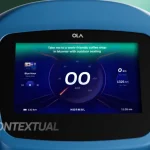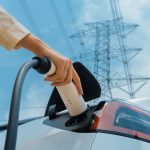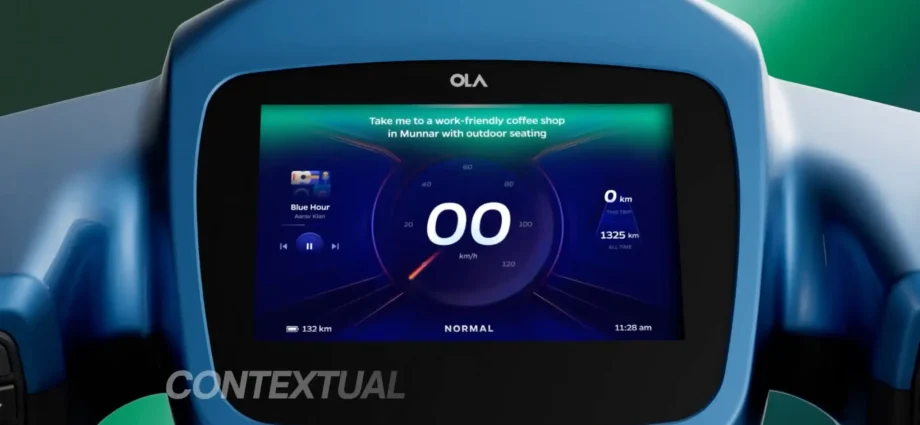Remember the simple joy of a scooter ride? The wind in your hair, the feeling of gliding through the streets. Well, that simple machine is getting a serious brain transplant. Honestly, it’s not just about two wheels and a deck anymore.
AI and smart technology are completely reshaping how we navigate our cities and, more importantly, how we stay safe while doing it. This isn’t some far-off future concept. It’s happening right now, turning your average e-scooter into a data-crunching, hazard-avoiding partner on your journey.
Beyond the Map: AI-Powered Navigation Gets Context-Aware
Sure, your phone’s map app can get you from A to B. But can it tell you the smoothest route to avoid a wobbly cobblestone street that’ll rattle your teeth? Or find a path that maximizes battery life on your e-scooter? That’s where AI-driven scooter navigation systems come in.
Learning the Lay of the Land, in Real-Time
These systems do more than just plot a line on a digital map. They ingest a constant stream of data. We’re talking about:
- Rider behavior patterns: Where do people naturally slow down? Where do they frequently stop or dismount?
- Road surface quality: Using sensors and rider feedback to identify potholes, cracks, and uneven pavement.
- Real-time traffic and pedestrian density: Actively routing you away from congested squares or busy bike lanes.
- Topography and elevation data: Finding the flattest route or one that uses hills to regenerative braking advantage.
The result? It’s like having a local guide inside your handlebars. Instead of just the fastest route, you get the smartest, safest, and most efficient route for a scooter. This is a game-changer for last-mile navigation solutions that often take riders onto unpredictable terrain.
A Guardian Angel on Two Wheels: The Safety Revolution
Let’s be real. Safety is the big one. It’s the main concern for riders, pedestrians, and city planners alike. And here, smart tech is moving from a nice-to-have to an absolute necessity.
Eyes in the Back of Its Head: Sensor Fusion and Collision Avoidance
Modern smart scooters are beginning to bristle with sensors—cameras, radar, lidar, you name it. This is called sensor fusion. The scooter’s AI doesn’t just rely on one data point. It combines them all to create a 360-degree, hyper-aware understanding of its environment.
Imagine this: A car door starts to swing open just ahead. An audible alert pings from your scooter. Or, a pedestrian steps out from between parked cars. The system detects them and can automatically slow you down. This AI-powered hazard detection for scooters is like giving the vehicle a superhuman reflex—one that never gets distracted.
Predicting the Unpredictable
Perhaps the most mind-bending application is predictive AI. By analyzing thousands of hours of riding data, these systems can learn to anticipate risky situations before they fully unfold. The movement of a ball rolling into the street, for instance, often precedes a child running after it. The AI notes these patterns, offering a pre-emptive warning. It’s a bit spooky, but incredibly powerful.
The Tech Under the Hood: How It All Works Together
So, how does this magic happen? It’s a symphony of hardware and software. Here’s a quick look at the key players:
| Technology | What It Does | Real-World Impact |
| Inertial Measurement Units (IMUs) | Measures acceleration, tilt, and vibration. | Detects sudden swerves, hard braking, and even if you’ve taken a fall. |
| Computer Vision | Cameras “see” and identify objects (cars, people, obstacles). | Forms the basis for collision alerts and adaptive speed control. |
| Machine Learning Algorithms | Learns from vast datasets of rider and traffic behavior. | Enables predictive hazard awareness and personalized route optimization. |
| Vehicle-to-Everything (V2X) | Allows the scooter to communicate with traffic lights, cars, and infrastructure. | A traffic light could tell your scooter it’s about to turn red, prompting a gentle, early slowdown. |
Not Just for the Rider: The Ripple Effect on Cities
This transformation isn’t happening in a vacuum. The data collected by fleets of smart scooters is a goldmine for city planners. They can see exactly where near-misses are common, which intersections are chaotic, and where infrastructure like protected bike lanes is desperately needed.
In fact, this is creating a feedback loop. Riders get safer trips, and cities get the data they need to make all streets safer for everyone. It’s a win-win that was practically impossible before this level of connected technology.
The Road Ahead: What’s Next for Smart Scooters?
We’re still in the early chapters of this story. The technology is evolving at a breakneck pace. So, what’s on the horizon? A few things feel inevitable.
First, we’ll see even more sophisticated geofencing technology for urban mobility. Instead of just creating slow zones and no-go zones, AI could create dynamic geofences. A school zone could be a strict 10 mph during drop-off hours but a normal speed zone on weekends. The geofence would adjust automatically.
Then there’s full autonomy. Picture a scooter that can drive itself to a charging station or even come to you when you hail it. Shared micromobility companies are already testing this. It sounds like science fiction, but the building blocks are here.
And finally, personalization. Your scooter will learn your riding style—if you’re a cautious commuter or a more confident rider—and adjust its safety nudges and route suggestions accordingly. It won’t just be smart; it’ll be your smart.
A Final Thought: Re-Defining the Ride
At its heart, this isn’t just about adding bells and whistles. It’s about fundamentally changing our relationship with urban transport. The goal is to give riders a kind of confidence they never had before, to reduce that underlying stress of navigating complex city streets.
The humble scooter is becoming a connected, intelligent node in a larger, smarter transportation network. It’s learning to watch out for us, to guide us, and to protect us. And that transformation—well, that’s a journey worth taking.











